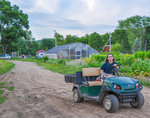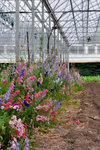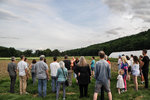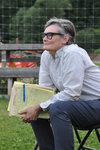 Narrowsburg
NarrowsburgLight Rain Fog/Mist, 43°
Wind: 8.1 mph
 Narrowsburg
NarrowsburgThe following is an excerpt from a blurb that caught my eye online a few weeks ago: “Join us on Saturday, June 26 at 7:30 p.m. at Farm Arts Collective (FAC) for a magical midsummer night of …
Stay informed about your community and support local independent journalism.
Subscribe to The River Reporter today. click here
This item is available in full to subscribers.
Please log in to continue |



.jpg)

The following is an excerpt from a blurb that caught my eye online a few weeks ago: “Join us on Saturday, June 26 at 7:30 p.m. at Farm Arts Collective (FAC) for a magical midsummer night of flora and conversation with Mimi McGurl, a walkabout and a short performance.”
The press release went on to describe the event: “We will begin with a walk through the Willow Wisp flower field, and then enjoy refreshments and a conversation with Farm Arts Collective ensemble member (and gardener) Mimi McGurl in her presentation titled ‘Queer Plants and Gardens.’ In it, she asks, ‘Is there such a thing as a queer plant? A queer garden? Well what does queer mean anyway?’”
Honestly, I’m a little confused, and as Gay Pride month rolls along, I decided to do a little digging before attending the garden party. “When did ‘queer’ become the new/old word for ‘gay’?” I asked Dharma aloud, who gnawed on a bone, doggy-style. I remember when queer meant odd, gay was foot-loose and fancy free and pansy was simultaneously a flower and an insult. I think that one still swings both ways.
I’m not even sure when the gay community began referring to itself as “LGBT” (lesbian/gay/bisexual/trans), but even that has morphed over the years, and frankly, I’m having difficulty keeping up with the jargon.
“Why is it called gay pride?” I typed into the Google. “What does that even mean?
“PRIDE is an acronym for Personal Rights in Defense and Education” was the first thing to pop up online—a surprise to me, who had no clue. Further investigation revealed that “the organization was formed in Los Angeles, CA in 1966 by Steve Ginsburg. PRIDE, from its very inception, was much more radical than the pre-1960s homosexual rights groups, which were more deferential.”
Who knew? I had always interpreted gay pride as the community expressing “confidence, self-respect and solidarity associated with openness about one’s own sexual identity, and the celebration of gay culture and history” just as Wikipedia described, but it would appear that my old-timey, out-of-touch explanation no longer suffices. As I read more about the FAC event that I was about to experience, I gleaned that Farm Arts Collective ensemble member and gardener extraordinaire McGurl would be covering a few salient points.
“Beginning with some basic science about the mating habits of flowers, the talk will then consider the range of flowers historically associated with gay and lesbian identity and will end with a re-imagining of the biblical Garden of Eden.” OK, then.
I recalled that the event post also stated that “the evening will include a botanical performance art piece titled Flower to the Power, performed live by the perfarmers [sic] of Farm Arts Collective, Jess Beveridge and Tannis Kowalchuk.” Before the lecture began, Kowalchuk and Beveridge moved rhythmically to their pre-recorded descriptions of various plants and flowers, as projections played across their faces, enchanting us all with the simple beauty of the scene, set against the backdrop of Willow Wisp Farm, a lovely sight all on its own.
McGurl, who during her talk about the sex lives of plant was both informative and entertaining, also pointed out the ever-evolving tags created by a generation that I’ve been told, in no uncertain terms, actively abhors “labels” of any kind. While hardly less confusing, it was nice to know that I’m not alone in my attempt to decipher the new normal. Although I had seen the addendum (LGBT+) in print, I had no clue what it meant, and with my head spinning (as Barbara Fox would say), I went back to the almighty internet after I got home for definitive answers.
“What does LGBTQ2+ mean?” I typed into the search engine, fingers crossed that I would understand the words to come.
“LGBTQ2+ is an abbreviation that stands for: lesbian, gay, bisexual, transgender, queer (or sometimes questioning) and two-spirited.”
“Oh, great,” I whined to my dog, who doesn’t see gender, or color for that matter. “Even the ‘Q’ has multiple meanings. I’m not sure the gay community can teach this old dog new tricks.”
But wait—there’s more. “The plus-sign signifies a number of other identities” the convoluted (IMHO) wording continued, “and is included to keep the abbreviation brief when written out; the full abbreviation is LGBTTTQQIAA.” I don’t have to look up the definition of the word “brief” to know that we’re all in trouble now. Good grief.
Regardless of what we call it, the LGBT+ community has been marginalized forever, and I understand the desire to be accepted as a “normal” and contributing member of society; to the best of my knowledge, all humans are “created equal,” which means that we need to treat everyone with the same respect, regardless of race, gender, religion, nationality or sexuality. I seriously doubt that I’ll never get the hang of “LGBTTQ2+,” but hey—a rose by any other name, right?
Fun Fact: “A rose by any other name” is from William Shakespeare’s play “Romeo and Juliet.” The full quote is, “What’s in a name? That which we call a rose by any other name would smell as sweet.” Basically, what it means is that what matters is what something is, not what it is called (www.bbc.co.uk).
For more information about Farm Arts Collective, call 570-798-9530 or visit www.farmartscollective.org.
Comments
No comments on this item Please log in to comment by clicking here